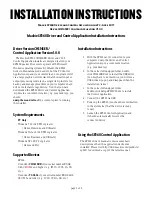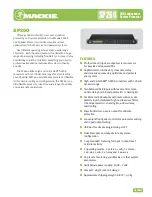
30
EPSON
S1C63358 TECHNICAL MANUAL
CHAPTER 4: PERIPHERAL CIRCUITS AND OPERATION (Oscillation Circuit)
4.4.2 OSC1 oscillation circuit
The OSC1 oscillation circuit generates the main clock for the CPU and the peripheral circuits. Either the
crystal oscillation circuit or the CR oscillation circuit can be selected as the circuit type by mask option.
The oscillation frequency of the crystal oscillation circuit is 32.768 kHz (Typ.) and the CR oscillation
circuit is 60 kHz (Typ.).
Figure 4.4.2.1 is the block diagram of the OSC1 oscillation circuit.
(b) CR oscillation circuit
Fig. 4.4.2.1 OSC1 oscillation circuit
As shown in Figure 4.4.2.1, the crystal oscillation circuit can be configured simply by connecting the
crystal oscillator (X'tal) of 32.768 kHz (Typ.) between the OSC1 and OSC2 terminals and the trimmer
capacitor (C
GX
) between the OSC1 and V
SS
terminals when crystal oscillation is selected.
The CR oscillation circuit can be configured simply by connecting the resistor R
CR1
between the OSC1
and OSC2 terminals when CR oscillation is selected. See Chapter 7, "Electrical Characteristics" for resis-
tance value of R
CR1
.
Note: • The current consumption of CR oscillation is larger than crystal oscillation.
• Be aware that the CR oscillation frequency changes slightly.
Pay special attention to the circuits that use f
OSC1
as the source clock, such as the timer (time
lag), the LCD frame frequency (display quality, flicker in low frequency) and the sound generator
(sound quality).
(a) Crystal oscillation circuit
V
SS
C
GX
X'tal
OSC2
OSC1
R
R
DX
C
DX
To CPU
(and peripheral circuits)
FX
V
SS
OSC2
OSC1
C
CR
To CPU
(and peripheral circuits)
R
CR1
















































